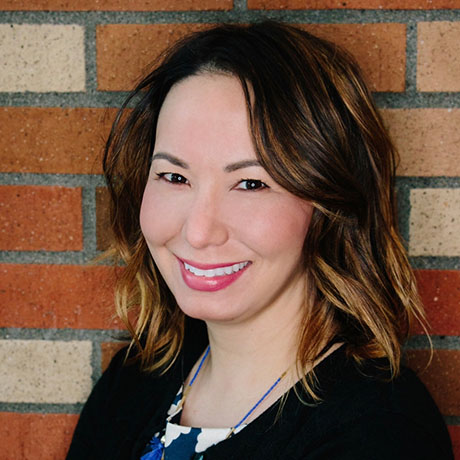Helpful Tips on Retaining Staff After the Transition
 By Jen Bennett, OMNI Practice Group
By Jen Bennett, OMNI Practice Group
Congratulations! You just achieved a major professional milestone in completing the purchase of your new practice.
There are many tasks that will require your immediate attention after closing, but one often overlooked item that is crucial to your transition is ensuring you retain the staff.
Here are some helpful tips for you to consider:
The first thing you will want to do is a formal “meet and greet.” I highly recommend that you meet your new employees within two days of the seller notifying the staff. This will help ease their anxiety about who the new boss is and give you an opportunity to personally remind them that they are an asset to the practice. It is also always a nice touch to schedule the introduction during lunch hour and as a kind gesture, to bring lunch for all. Be sure to check with the seller on any dietary restrictions, food allergies, and favorite restaurants.
Next, your new staff will be worried that you will be making changes that may negatively impact their lives such as pay, benefits, work hours, scheduled time off, etc. Make it a top priority to understand their concerns and to assure them that you will carefully evaluate all potential changes before making any decisions. While things might not be run exactly how you want them to be, be sure to weigh the consequences of losing a key staff member because of a decision you might make. Sometimes it is better to leave things intact while you get yourself established with the staff and with your new patients before you implement your desired changes.
Finally, you will be busy but find time to make a personal connection. Set aside one-on-one time with each staff member, get to know them, what they care about, and why they got into dentistry. Establishing a relationship early on will pay dividends down the road as your new patients will certainly be asking their trusted hygienist, assistant, or office staff member, “What do you think about the new guy/gal?” The goal is to not only retain your staff but to retain patients as well. Having staff in your corner is critical to your long-term success.
Read More9 Critical Questions You Need to Ask Before Buying a Dental Practice
 By Michael Dinsio, MBA, Next Level Consultants
By Michael Dinsio, MBA, Next Level Consultants
Clear objectives are key when going into a buyer-seller meeting. They can mean the difference between a smart purchase and a risky one.
The goal of any practice purchase is to eliminate as many risks of losing patients as possible. And that means having a plan. Before you meet with the seller or get on a call with the broker, write down your questions. Sometimes it can be hard to narrow down all of the key points, so pick your top concerns and go in order. Clear your mind and know exactly why you are asking the question and what response you want to hear. Be alert to “red flag” responses. Listen to what isn’t being — what is conveniently left out or glossed over.
Active listening is challenging in the best of times. In a stressful conversation, it becomes even more so. Case in point, in hostage situations, the FBI always has two agents on the phone: one for asking the questions and the other to actively listen. Take a play from their book and have someone with you to listen and take notes. This is where a buyer’s representative becomes invaluable.
Having the right representative on your side frees you up to focus on the clinical aspects of the transition (what you know best) while knowing your representative is focusing on the business and transition plan. In my work with individual clients, we strategize the meeting and go in with a game plan. The doctors feel secure in the knowledge that they have a partner on their side.
Whether you’re going into the meeting alone or considering a representative, be organized with your thoughts and consider asking one (or all!) of the following nine questions. Purchasing a practice will be one of the biggest decisions of your life. Educate yourself. Ask smart questions. And don’t hesitate to call in a rep.
Question 1: Why are you selling your practice?
The right answers would be:
- They have saved enough money to retire
- They are ready to settle down and enjoy life
- They are experiencing some health issues
An answer that is too far from one of these three could signal a problem. Some sellers put their practice up for sale because they are simply trying to get out of a bad situation. Typically, unless there is an unusual situation, practice owners do not sell their business overnight.
Ask as many questions as you can around this if the story does not make sense.
Question 2: When does your lease end?
Dental lease traps are real.
And they can cost you thousands of dollars. Many sellers put their practices up for sale when their lease is about to expire. If you’re thinking that’s no big deal because you can simply renew it, think again.
Leases are one of the biggest deal killers in this business. Renewing requires time, energy, and money to renegotiate the terms that are favorable to you. Relocating also costs a substantial amount of money and risks of losing patients. Make sure your practice can financially absorb those costs if you absolutely need to move.
I highly recommend my clients to get a lease that is coterminous with their bank loan. Meaning, the same term length as the bank term length. This will ensure that your lease does not expire before your loan is paid off. Getting a ten-year lease will ensure you have plenty of runway to ramp up and be able to afford a possible relocation down the road.
Question 3: How are we handling your credit balances?
As a practice owner, it’s normal to have credit balances. Unscrupulous sellers will try to pawn these credits onto the buyer, hoping that it was missed during due diligence.
Every practice will have some accounts payable and there are a couple of ways you can deal with the credit balances specifically.
- Shore up the balance at closing
- Invoice the seller for the credit when the patient is credited
Of the two options, I recommend the first option, mainly because it is easy and settled all upfront. You may have a preference for one over the other, however, it must be agreed on before the sale. I find that both of these arrangements prevent you from paying out of pocket and spare you from painful conversations with the patients and seller post-transition.
Question 4: Are you running any personal expenses through your practice?
Every practice has the major expenses such as rent, dental supplies, wages, lab, and advertising. As the buyer, you need to know these numbers intimately.
However, it is also imperative to ask about hidden personal expenses such as auto, cell phone, insurance, 401k, and pension. Think about the doctor that pays his spouse a salary for doing the “bookkeeping.” Or the personal Amazon accounts linked to the “office expense.” These are expenses that need to be identified upfront so that you can evaluate the practice’s true profitability.
Make no mistake, most practice owners have these expenses, so you should not hesitate to ask this question.
Question 5: Are there any KEY team members planning to leave with you?
This question is intended to smoke out one of the most dangerous risks of any dental transaction. Most sellers and buyers believe that the patients’ goodwill is with the dentist. While this is true in many cases, in my experience the TEAM collectively carries the majority of the positive feelings about the practice. Having to replace the practice’s 10-year veteran hygienist would hurt any transition.
I want to make this point clear. No one single employee could impact a practice in a way that would ruin the business. However, losing both the doctor and one of the key members of the practice at the same time would be hard to rebound from quickly.
Question 6: How would you describe the culture of the practice?
This is an open-ended question. It’s meant to be. Sit back and learn about the philosophy and culture of the office. How have they handled difficult situations with patients and team members? How does the team communicate with one another? Solve problems? Welcome new team members? Vet new ideas?
By asking this question and being inquisitive, you get a sense of the culture and the communication style of the practice. This is also an opportunity to gain insight into the team members’ relationships with one another and the benefit packages that the owner currently offers.
The goal here is to mimic the seller’s style to make sure the entire team and patients are comfortable and not shocked post-transition. Can you realistically emulate what they are already doing? It’s for you to judge!
Question 7: How many weeks of hygiene are fully scheduled?
It is no secret that the hygiene department is the beating heart of any dental practice. Having a solid base of patients to exam right out of the gate will give you the opportunity to present dentistry. From this department, the average dentist can expect to collect $3 of restorative work for every $1 dollar of hygiene. Without patients in the hygiene columns, a buyer will have a hard time filling their schedule from day one.
Based on the answer to this question, I would also suggest evaluating the overall health of the Recare program. Hygiene appointments booked out between 4 to 6 months is a good sign the practice’s recare program is healthy. You can learn a lot about how an office operates by simply paying attention to the numbers and painting “the story.” If the office is not rescheduling hygiene or avoiding cancelations, then you may have issues with the overall culture of the practice. It’s all there you just have to look for it!
Question 8: How would you describe the office’s clinical philosophy?
For a transition to be successful, it is important the new dentist replicates the previous owner’s practice style, at least initially.
I have seen it both ways. The buyer is too aggressive right out of the gate, making clinical changes that scare both the patients and the team. Or the buyer is too conservative and quickly runs the practice into the ground.
By asking this simple but pointed question, you can learn so much about how the office takes care of their patients. Before leaving your due diligence meeting, have an idea about how conservative or aggressive the office really is. More importantly, be brutally honest with yourself. Can you replicate what the seller is doing? You should not have to convince yourself on your ability to maintain the cases the practice is currently performing.
Simply put, it’s important for the buyer to walk in the seller’s shoes.
Question 9: What marketing worked or didn’t work in the past?
There is a good chance that the seller has tried many things throughout their journey of being a practice owner. Marketing is one of those things that takes trial and error. Asking this question could save you a lot of time and money!
You may be thinking this question does not pertain to the office you are interested in because they are not spending anything on advertising. Do not be fooled. Many sellers love dentistry so much that they hold onto their practice way too long and keep it more as a hobby than a business. What you will probably find is that the seller has stopped their marketing spend due to a lack of ambition. What you want to know is what worked and what didn’t back when they were growing!
In conclusion…
Asking key questions, active listening, and a curiosity to learn from the seller will do more for you than any number crunching. Numbers are black and white, but it’s the gray area that will make or break your transition.
The interview with the seller is by far one of the most important things in the due diligence process. But hopefully, with these 9 intentional questions, you can avoid major landmines and capitalize on an enormous opportunity.
No doubt, buying a dental practice is stressful. There are lots of things to consider, lots of pitfalls and lots of money involved. But, on the flip side, taking your career into your own hands is priceless.
Contact:
Read MoreBuy a Veterinary Practice Now, or Wait?
Jim Vander Mey, CPA, ABI, and licensed commercial broker with OMNI Practice Group, explains to veterinarians the cost of waiting to own a practice and how buying a practice now should pay off.
Read MoreThe Cost of Not Owning in the COVID Era
 By Corey Young, DDS, MBA, AVI
By Corey Young, DDS, MBA, AVI
I know. Running a business seems daunting. You just want to be a doctor and not have to worry about the rest. I understand. That said, it is wise to consider what is left on the table by being a career employee, or by waiting for that perfect practice to show up.
Let us consider a fictitious practice:
- Overhead: 60%
- Gross: $550,000
- Net: $220,000
- Acquisition price today, due to COVID environment: $300,000
- Interest rate: 4%
- Loan of $330,000 (acquisition price plus one month of working capital) over ten years: $3,341 monthly payment/$40,000 annually/$400,930 over life of loan
Let us assume 10% growth in the first two years and 5% growth in the next eight, all while maintaining overhead percentages.
- Total income over those ten years $2,600,000
- Estimate of practice value in ten years $700,000
Sum of income and asset value $3,300,000
As an associate, how does this compare your compensation package over the next decade?
Buying a Dental Practice During COVID
Our owner and founder, Rod Johnston, gives his thoughts about buying a practice today during the COVID pandemic. Rod has helped hundreds of dentists purchase practices for over 15 years.
Read More
